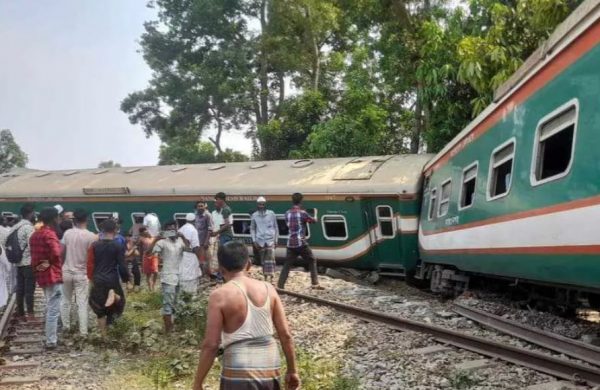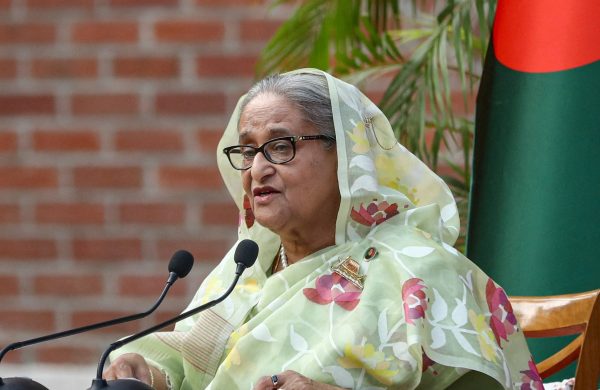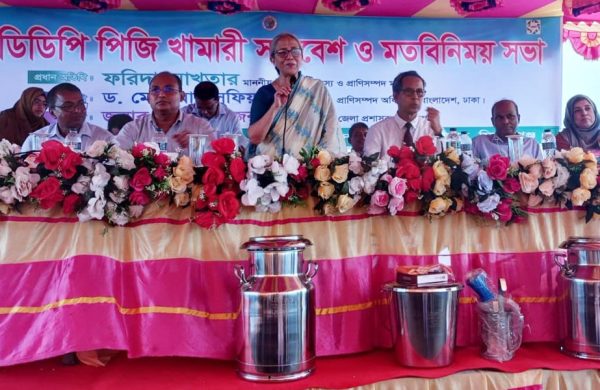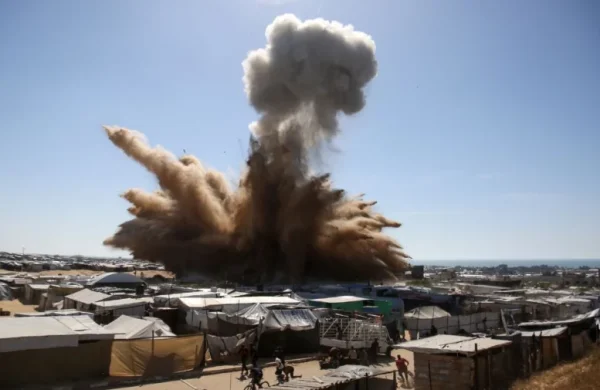BD Railway faces frequent accidents amid neglected maintenance of aging infrastructure
- Update Time : Monday, May 13, 2024

TDS Desk:
Despite launching several new development projects aimed at enhancing its services, Bangladesh Railway continues to struggle with the maintenance of old rail lines and bridges, leading to an increase in accidents, including derailments.
Sources from Bangladesh Railway report that approximately 63% of rail accidents are due to deteriorating lines and weak bridges.
Out of the country’s 3,400 kilometers of railway lines, only key sections such as the Dhaka-Chattogram, Dhaka-Joydebpur, and Jashore-Abdullahpur lines are double-tracked, while the majority remain single-tracked and in poor condition.
Transport experts have identified numerous systemic issues including frequent station closures, aging rolling stock, deteriorating infrastructure, overcrowding, delays, ticketing problems, and general mismanagement—all contributing to the railway’s challenges.
Rail accidents are increasing due to signaling errors, expired coach connections, insufficient supervision of rail lines, risky rail crossings, and lack of passenger facilities.
According to unofficial information, there are more than 3,400 kilometers of railway lines across the country, of which only 1,000 kilometers are in good condition.
Dr. Hadiuzzaman, a transportation analyst and professor at BUET, criticized the ongoing neglect of essential maintenance in favor of expanding the railway’s assets. “There’s a tendency to focus on acquiring new locomotives and coaches because it initially costs less than maintaining infrastructure. However, this neglects the crucial upkeep needed for existing rail lines and bridges,” he explained.
The neglect is evident in the fact that nearly 2,500 kilometers of rail tracks are considered risky, yet trains continue to operate on them, leading to reduced speeds and efficiency. This was highlighted by recent incidents, including a head-on collision between two trains in Gazipur’s Joydebpur due to signaling errors and multiple signaling mistakes on the Dohazari-Cox’s Bazar line in Chattogram.
The traditional signaling method, reliant on manual point adjustments by pointsmen, has been identified as a key risk factor. Station masters’ errors in signal provision can lead trains onto the same track, risking collisions. The manual system also increases the likelihood of derailments due to improper point configurations.
Progress on modernizing the signaling system has been hampered by financial constraints and delays in payments to contractors, particularly in major projects like the construction of additional lines from Dhaka to Tongi.
Sardar Shahadat Ali, Director General of Bangladesh Railway, acknowledged the challenges posed by the ongoing projects and the transition to a computer-based interlocking system. He cited staffing shortages and a lack of skilled workers as exacerbating risks but mentioned ongoing efforts to recruit skilled signal staff and strengthen monitoring systems to enhance safety.
Despite these efforts, the newly recruited personnel are still not proficient in the old manual signaling methods, and outsourced pointsmen lack specialized railway training. Regular personnel turnover further complicates the training and adaptation process.
According to the 2022-23 annual report of the Ministry of Railways, 315 passenger trains operate across the country. Among them, 143 trains started their journey in the past 15 years. During this time, 843 kilometers of new railway tracks have been constructed, and 1,391 kilometers of railway lines have been repaired.
Furthermore, buildings have been constructed for 146 new railway stations. Reconstruction of 273 station buildings, construction of 1,037 new bridges, reconstruction of 794 railway bridges, acquisition of 109 locomotives, collection of 658 passenger carriages, relocation of 530 passenger carriages, collection of 516 freight wagons, relocation of 277 freight wagons, and so on, have been done.
Currently, there are 1,788 coaches, 47% of which have gone beyond their service life. The number of operational engines is only 295.
Against a required workforce of 47,600 in the railway, only 24,000 are currently employed.
In the past five years, more than 2,000 accidents have occurred, leaving more than 150 passengers dead, and around 500 injured. In the last four months alone, there have been 160 railway accidents and incidents of sabotage across the country. In these incidents, 18 passengers have died, and 200 have been injured. (Source: UNB)
















